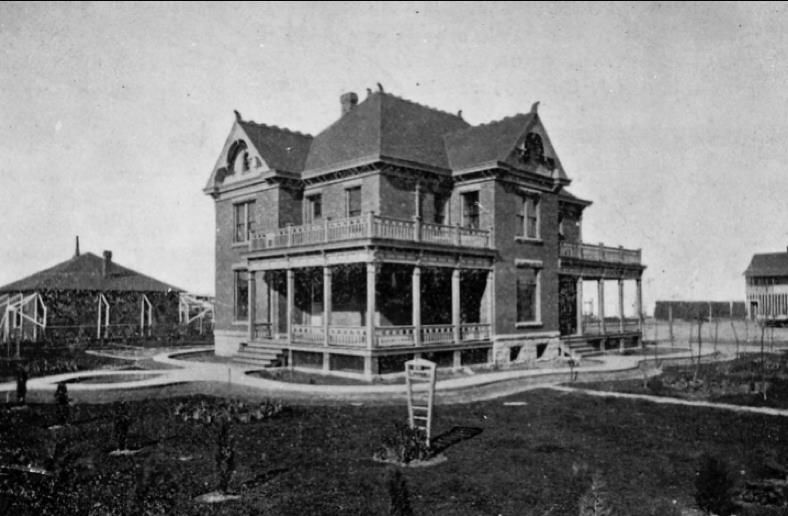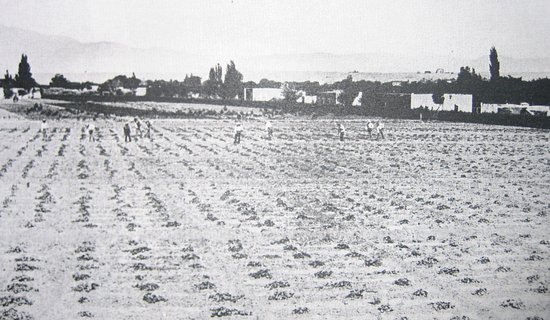At the heart of this district is the original central plaza that is lined with over a hundred quaint little shops. Like everything else in Albuquerque, a visit to Old Town is a delightful mix of old and new, with sights that range from Civil War cannons to the Church of San Felipe de Neri. Just off of the main plaza, the La Hacienda restaurant preserves the core of what once was a large Italianate-style brick home constructed in 1898.
A very old adobe structure which had been rented out by the army for use as officer’s quarters and which later housed the first Albuquerque Academy in 1879 was razed before construction of the Blueher house began.
The Blueher house was once a two story Queen Anne brick mansion, one of the four large homes that graced the plaza before the First World War. The interior of the house featured pine woodwork stained to simulate oak, a magnificent staircase to the second story, etched glass door panels, stenciled room wall trim and a large upstairs linen closet. Servants were able to reach the second story via their own steep staircase in the rear of the building.
During the “puebloization” of the 1950’s, the Blueher House was adapted for restaurant purposes by the removal of the high hipped roof, porches and wings. Adobe walls were added and stucco was applied over the brick work. Its roof and porches were removed, its brickwork covered with stucco to imitate adobe, and a portico with rough-hewn posts and beams, corbel bracket capitals, projecting vigas and a ceiling of latillas was added around two sides. Stripped of its details, the original house nonetheless remains visible at the back. The adjacent structures of adobe and wood, now occupied by shops, were part of Blueher’s farm.
A man named Herman Blueher, who arrived in Albuquerque around 1882, constructed the house with wife his Sophie. The architectural style had become less popular on the East Coast but arrived simultaneously with earlier and later styles with the railroad. Herman got a job working for a local produce farmer, and over the years, he gradually learned the operational aspects of the farm and produce business. By 1898, he had amassed a considerable fortune and went into business for himself.
Blueher’s market garden was more than twenty acres in extent and had an unusual irrigation pond in the center near the northwest edge of what is now Tiguex Park. The pond was stocked with fish and according to Old Town folklore; residents would occasionally ice skate on the frozen pond in the winter. Blueher’s business was also the first farm equipment dealership in Albuquerque that introduced draft horses to the city and experimented with the cultivation of tobacco in the Rio Grande Valley.
Later, the house was the home of Doctor Nolting’s family, until its later remodeling into the Hacienda dining rooms. Leon Watson added the new layout of the building, an addition that wrapped around the mansion itself, sometime before 1953.
In 1954, the building changed ownership again. The Brown family, who owned the La Placita restaurant next door, decided to relocate their restaurant to a larger locale. They renamed the restaurant La Hacienda, and during its peak years, it was the largest and busiest restaurant in Albuquerque. Many celebrities of the day dined there, including Claude Rains, Duncan Hines and Gene Tierney.

